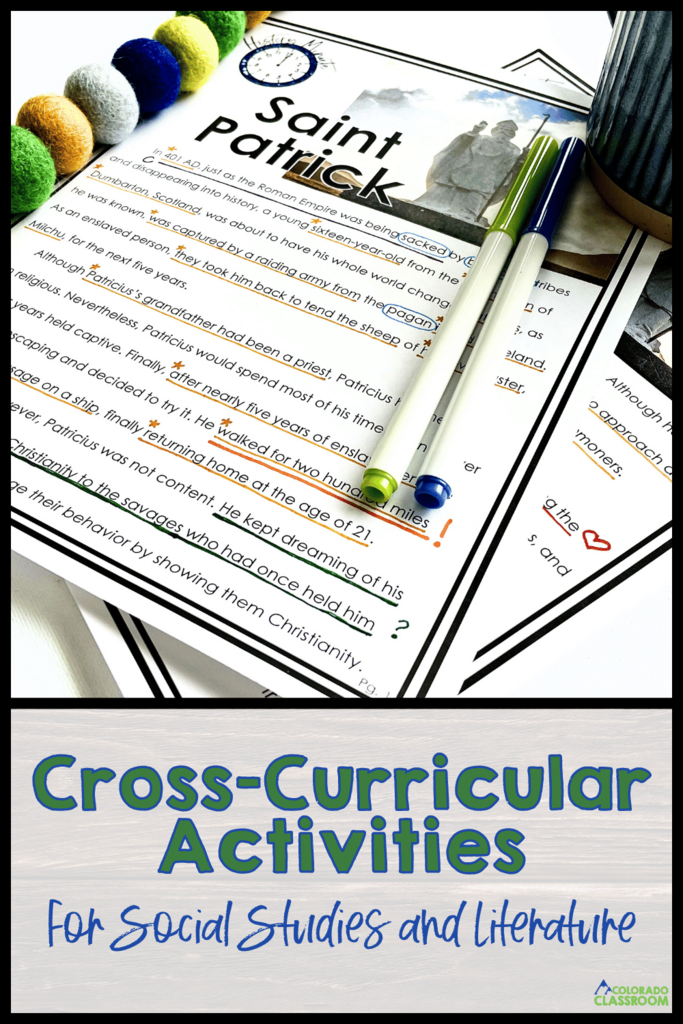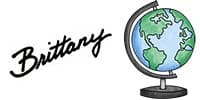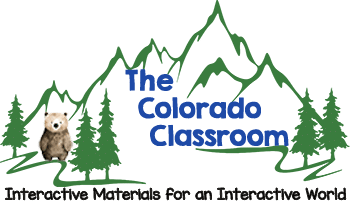Cross-Curricular Activities for Social Studies and Literature
Have you ever tried cross-curricular teaching in your classroom? It’s a teaching method with a lot of benefits for students. I loved using cross-curricular teaching in my classroom as a way to connect social studies with language arts. I love seeing my students experience the joy and connection that unfolds when history and literature merge in the classroom.
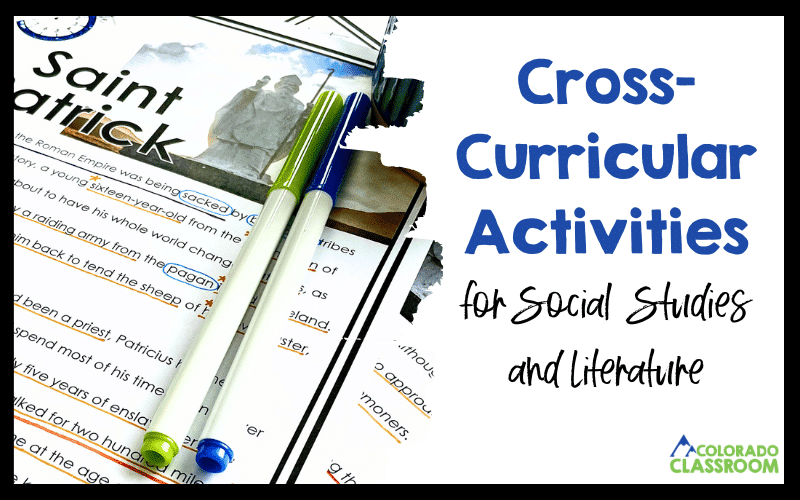
Whether you navigate a self-contained classroom or plan a collaboration with the language arts and social studies teachers, the natural integration of these two subjects becomes evident. Social studies, with its rich tapestry of reading, studying, and understanding the words of our ancestors, provides the perfect backdrop for this educational adventure. Today, we are exploring the importance, excitement, and engagement that arises when we integrate cross-curricular history and literature activities.
The Importance of Cross-Curricular Lessons
Teaching with a cross-curricular approach is about creating an experience that resonates with my students. One that engages them and pushes them to dig a little deeper into what they are learning. Let’s face it, students are not engaged with just facts and figures. To get their attention we need to give them an experience, a journey that sparks a genuine curiosity about the world. In this digital age, like it or not we have only seconds to grab their attention. By blending history and literature, we can provide educational opportunities that breach the boundaries of individual subjects.

Cross-curricular lessons offer opportunities to explore different perspectives and deepen understanding. History becomes more than a series of events, it becomes a living narrative that our students can relate to. Literature, on the other hand, helps us to better understand the cultural, social, and emotional moments of different time periods. But together. . . that’s where the magic happens!
With these types of lessons, I can challenge my students’ critical thinking skills. I can encourage students to connect the dots, draw parallels, and even question historical events. Reading literature from related time periods, or texts about the events, provides an understanding of what life was like and the desired values.
I find that cross-curricular lessons create a dynamic classroom environment where students are excited to view history from different angles. This connection of history and literature increases engagement and makes the learning process exciting. Students start to see the interconnectedness of subjects when they realize that history isn’t confined to a textbook and literature isn’t just a collection of stories.
How to Integrate Cross-Curricular Activities for History and Literature
There are multiple ways to integrate history and literature. Let’s explore some different ways you can easily connect literature and social studies in your classroom.
1. Using Biographies
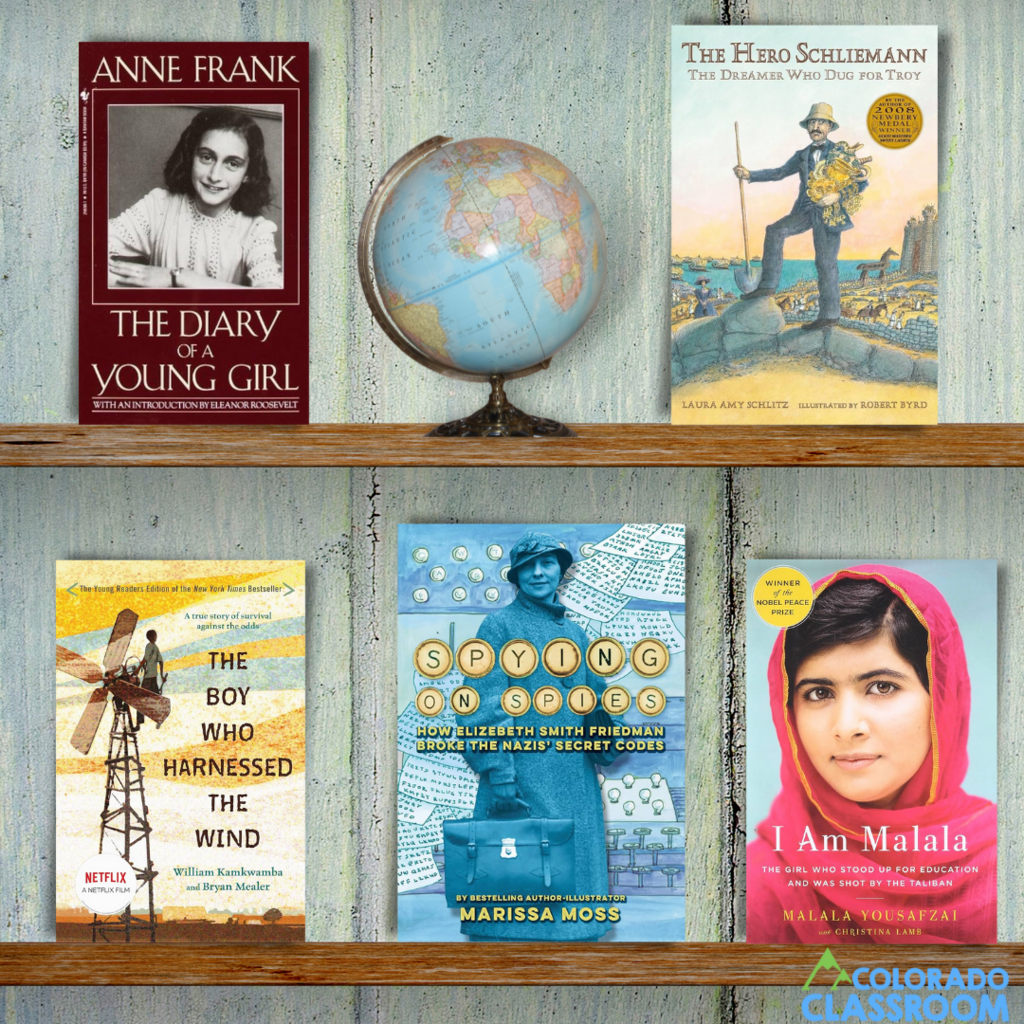
One way I create cross-curricular activities is through the use of biographies. These personal narratives offer my students a relatable entry point into historical events. As we dive into the lives of key figures, my students can begin seeing similarities between the person and themselves or people in their lives. They also learn what led these leaders, artists, or visionaries to make the decisions that they had to make.
Encouraging students to read biographies is just the beginning. I challenge them to go beyond the story and analyze the profound impact these individuals had on the broader historical context. What ripple effects did their actions create? How did their beliefs and choices reverberate through time? These are the questions that transform passive readers into active historians, encouraging critical thinking and a deeper understanding of cause and effect.
As students step into the shoes of historical figures, they gain insights into all that went into decision-making. They get to see what life was like during these bygone eras. This deepens their connection to history while creating a sense of empathy that follows them in and out of their classrooms.
2. Researching a Place or Topic
Whenever I can, I get my students actively involved in finding the content for our lessons. One way I do this is through the use of research based activities. And. . . these research activities are great cross-curricular activities. The research process gets students using their reading and writing skills while learning more about our social studies topic.

Encouraging independent research is a strategy for growing critical thinking, research skills, and an understanding of historical contexts. By providing opportunities for my students to explore, question, and analyze, I lay the foundation for a deeper connection with the subject matter. Reading, writing, and research go hand in hand. It’s an important skill set for them to be able to read a variety of texts and be able to explain what it’s saying to them in their own words.
The flexibility of research allows my students to choose their preferred way of presenting their information. Whether it’s a written report, a slideshow, historical fiction, or creative writing, the emphasis is on fostering their communication skills. Once they have their information, I encourage collaboration as they share their findings with classmates. This collaborative cross-curricular activity makes their learning experience more engaging while mirroring real-world situations.
3. Using Articles to Introduce Topics for Cross-Curricular Lessons
Another way I combine history and literature is through the use of articles. My goal with any article I use is to create a bridge between the past and the present. It’s a deliberate strategy to show my students that history isn’t a static entity confined to textbooks but a force that echoes through time. By immersing them in a contemporary context, we spark their interest and show them the relevance of historical events even in today’s era.

I don’t just hand over these articles and call it a day. No, I challenge my students to roll up their sleeves and become historical detectives. We dissect these articles with a critical eye, peeling back the layers to reveal the connections between the past and today. It’s a journey of analysis, questioning, and discovery that transforms a simple reading lesson into an engaging exploration.
The real magic happens in the discussion that follows. I work hard to maintain an environment where my students actively share their insights, connecting the dots between the article and the broader historical information. I want my students to be aware of the facts but more so to understand how the events of the past ripple through time, shaping our contemporary world. As we weave these current events into our history lessons, the classroom becomes a lively forum of ideas and perspectives. My students aren’t just spectators. I’m shaping them into active participants!
4. Reading Comprehension Strategies to Enhance Cross-Curricular Activities
In cross-curricular lessons, there’s a lot of reading with history and literature. I always tell my kiddos there’s a difference between reading and active reading. Active reading is where they are using reading comprehension strategies to help them better understand what they’re reading. Strategies like questioning, predicting, and summarizing can all be used while reading historical information.

As we explore historical texts, these strategies guide our students through the complexities of historical events. Questioning invites them to dive deeper into the causes and consequences of historical moments. Predicting allows them to anticipate outcomes and understand the cause-and-effect relationships in the information. Summarizing helps turn the information into manageable, comprehensible snapshots.
Another strategy is close reading. With close reading, our students look at words or phrases that help develop a stronger understanding of the facts. We look for specific details and ask questions that arise while reading. While we are reading, we make annotations along the way. Annotations are personalized notes that we can make alongside the text that we think is important, confusing, or have a question about. They show what our brains are currently thinking about the information. It’s important to keep in mind that it’s not just about learning these strategies in isolation. Our students need to apply them to better access the context of history.
5. History Minutes Cross-Curricular Activities
One resource I use that connects reading comprehension skills with social studies are History Minutes. I created History Minutes as a cross-curricular activity that incorporates literature into my history classes. But. . .this isn’t your average history lesson. It is a blend of social studies, ELA, geography, and either math or science. It’s cross-curricular learning that doesn’t require lots of time. Intrigued? Let me walk you through an example of one.

In this example lesson, you and your students are about to uncover the rich history of St. Patrick, the iconic figure known for his impact on Ireland. What makes this adventure unique is the way we approach it. I don’t start with lectures or textbook readings. Instead, I hand out a two-page article that acts as your students’ portal into the past.
We first dive into the passage, looking for the main idea, key vocabulary that adds to the narrative, and comprehension challenges that’ll keep their minds busy. The “prove yourself” section invites your students to showcase what they’ve learned, which turns passive reading into an active engagement with the material. I also made sure to include a writing component so students could express their thoughts and reflections.
Inside, there are also some annotations and close note questioning. These skills are ones that need to be directly taught in the beginning, so I’ve included a page with different annotating symbols and what to use them for. Our main goal with this is to actively engage with the content. Annotations let your students leave their mark, jotting down questions, insights, and connections that let them enter into dialogue with the text. Close note questioning takes it up a notch, encouraging them to dig deeper and take the risk to wonder, analyze, and question.
St. Patrick is not the only History Minutes resource. There are others that cover topics from Mount Rushmore to Rocketry to Stonehenge. Visit my store on TPT to see all the different cross-curricular topics available!
6. Cross-Curricular Literature & Read Aloud Books
Growing up, I loved read aloud time in school. It did not matter how old I was, I loved the adventure that would unfold as our teacher read to us. When I became a teacher, I knew I could do the same for my students while tying it into history. Below are a few of the literature books and read alouds I do with my students to make our units of study more cross-curricular. As we work through these novels, I have my students journal their thoughts about what they listened to for a few minutes afterward. They can summarize, ask questions, write commentary, and even make predictions for future chapters!

- The Bronze Bow immerses your students in ancient and religious studies with this captivating novel. Set against the backdrop of the Roman Empire, “The Bronze Bow” not only provides historical context but also dives into themes of faith, freedom, and rebellion. As your students explore ancient civilizations, this book serves as a literary companion, offering a perspective that complements your curriculum.
- The Odyssey takes your students on an epic journey through classic literature. As they dive into Odysseus’s adventures, they encounter mythical landscapes and gain insights into the values and traditions of ancient Greece. This classic work becomes a literary time machine, transporting your students to a world where gods, heroes, and epic quests shape the fabric of history.
- A Tale of Two Cities is the perfect book for your read-aloud sessions during the study of the French Revolution. It vividly captures the tumultuous times of the revolution. My students are able to look through the lens and explore the social and political upheavals. The prose and intricate plot offer an immersive experience of historical events.
By incorporating these novels into your lessons, you’re introducing cross-curricular literature. You’re also creating a connection between storytelling and historical exploration. The characters, settings, and themes in these books are tools that shape your students’ understanding of historical contexts. When choosing books to use as a read aloud, keep in mind that they should be about 3 levels above their current reading level. Since you’re reading aloud, they will get the benefits of new vocabulary, new styles of writing, and sentence structures in the process!
Integrating History and Literature Makes Learning Memorable
Weaving literature into history lessons isn’t hard. It might take a little adjustment to your current teaching methods, but it is well worth it. Whether you choose to connect these subject areas through books, articles, or read alouds, your students will reap the benefit. The power of literature to breathe life into historical narratives, making the past not just a series of events, but an immersive experience. Use these strategies to continue fostering an environment where history and literature boost knowledge and curiosity in the hearts and minds of our students.
Save for Later
Remember to save this post to your favorite social studies Pinterest board so you can plan cross-curricular lessons with history and literature!
